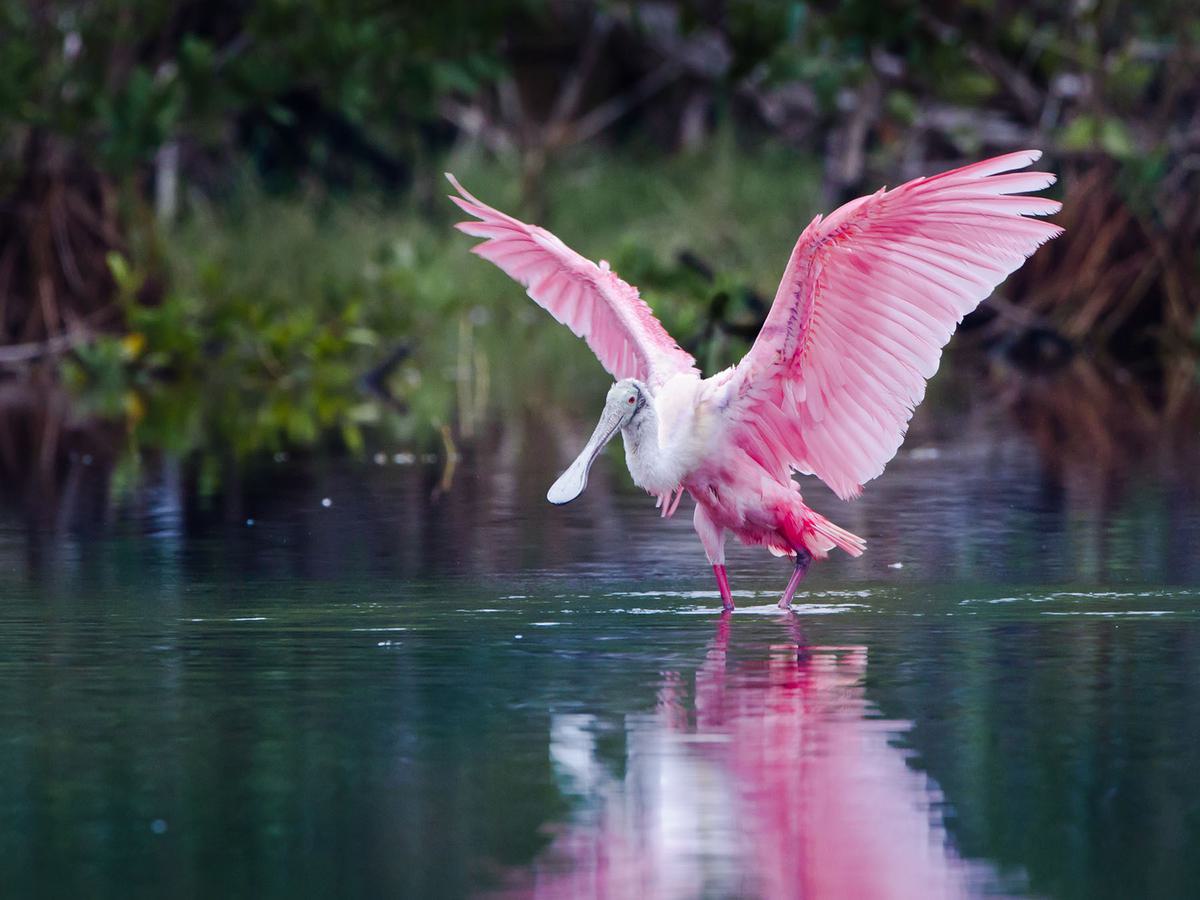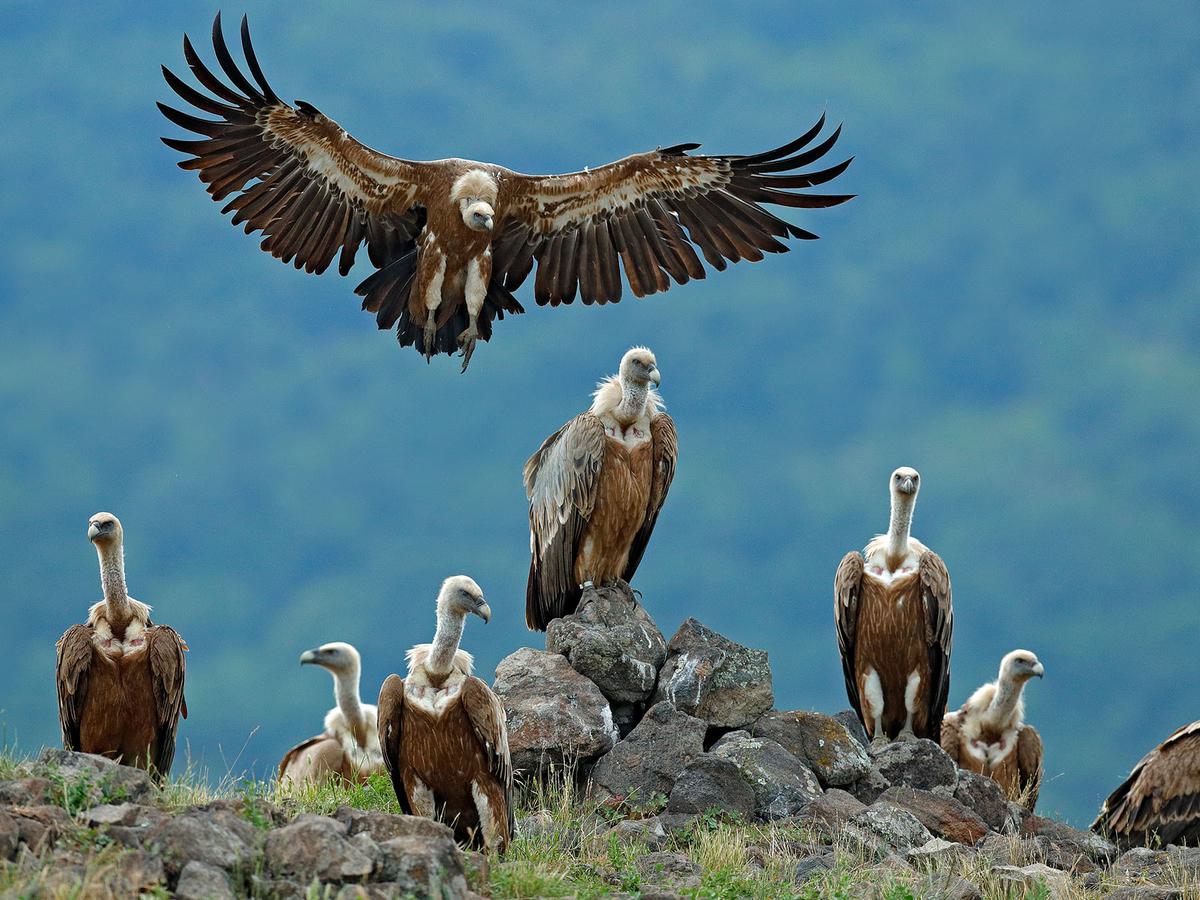Habitats and Biodiversity

Viewed from above, you can’t help but notice the dominant deep blue of the oceans and the variety of green, brown, and white shades covering the continents. The striking changes in land surface color indicate visible differences in climate, geology, and vegetation cover, all of which create different bird habitats and influence the avian biodiversity found across the globe.
Understanding bird habitats will make you a better birder and help you predict which species you’re most likely to spot. Studying habitats and the factors that shape them is also vitally important for bird conservation since many species are restricted to particular environments.
In this guide, we introduce the concept of bird habitats and their importance. Read along to learn why different birds live where they do and why we need to conserve each habitat if we want to protect avian biodiversity.
What are Bird Habitats?
The Earth’s surface is made up of different types of rocks and soil, and the climate at any point on the planet is influenced by weather patterns created by the Sun’s warmth and the rotation of the Earth. These differences, combined with distance from the equator, height above sea level, and the interactions of plants and animals, combine to create specific habitats that support different bird species.
But why do different birds prefer different habitats? Read on to learn about the connection between ecosystems and birds.
Over thousands of years, each bird species has evolved physical and behavioral characteristics to help them survive in certain environments. Some birds can adapt and thrive in various habitats as long as they can access resources like food, water, and shelter. Unfortunately, some species are highly specialized and cannot adapt to altered habitats.
Let’s take a look at a few important bird habitats and some of the environmental factors that shape them:
Deserts
Deserts are habitats characterized by low rainfall, creating a very sparse vegetation cover. You can find deserts at many altitudes and latitudes — even ice-covered Antarctica is considered a desert! Deserts support relatively few birds, but the species that live there are often highly specialized for life in such tough environments.
Wetlands
Wetlands are habitats where water is present above or close to the soil surface for all or parts of the year. These habitats often occur in areas of higher rainfall but are also found where groundwater collects near the surface or where rivers bring water from other areas. Waders, wildfowl, and many songbirds and raptors rely on wetland habitats.
Forests
Forests are typical of higher rainfall areas that support dense tree growth. Forests occur in the tropics (e.g., tropical rainforests) and in higher latitudes (e.g., boreal forests). According to Birdlife International, forests support the highest diversity of bird species in the world, including a staggering 77% of all species.
Other Important Habitats
- Savannas
- Grasslands, prairies, and scrub
- Alpine habitats
- Tundra
- Mangroves and estuaries
- Sandy beaches and rocky shores
- Farmland

A pair of Macaws flying through their forest habitat

Wood Stork in its wetland habitat
Biodiversity in Bird Populations
Biodiversity (short for biological diversity) describes the variety of living species that occur in any given area.
Bird biodiversity is typically highest in the tropics and higher rainfall areas but lower in harsh environments at high altitudes and latitudes. Biodiversity also decreases when human development damages habitats, although about half of all birds can be seen in somewhat modified habitats.
Protecting native/indigenous biodiversity is extremely important for bird conservation because birds share their habitats with many other animal and plant species and rely on them for basic needs like food and shelter.
The Role of Birds in Ecosystems
The relationships between birds and other biodiversity can be pretty complex, and birds play many vital roles in shaping and maintaining the habitats where they live. Let’s explore some interesting examples.
- Fruit-eating birds like American Robins disperse seeds by eating fruit and leaving the seeds behind in their droppings. This helps many plants maintain their populations and spread to new areas, but it can also contribute to the spread of invasive plants introduced from other regions.
- Seed caching birds like the Eurasian Jay and the Blue Jay of North America bury acorns to store them as food for the winter. Acorns that are forgotten often germinate and grow, so these birds play an important role in dispersing and planting seeds!
- Nectar-feeding birds like Hummingbirds play an important role in pollinating flowers, thereby strengthening the gene pool of plants and allowing them to produce fruits and seeds that many other birds and animals rely on for survival. Check out this in-depth guide to discover much more about bird pollination!
- Insectivorous birds can reduce insect numbers dramatically in some cases. As a result, birds can play an important role in shaping their habitat by altering the dynamics between herbivorous insects and the plants they feed on.

Eurasian Jay with an acorn - Acorns they forget about often germinate and grow

Hummingbirds play an important role in pollinating flowers
Threats to Habitats and Biodiversity
Humans are experts at altering our environment to suit our needs, although the changes we make usually don’t benefit the plants, birds, and other animals that are adapted to the original habitat. Read on to learn more about habitat loss and birds.
Habitat Loss and Birds - Major Causes of Environmental Degradation
Monoculture
Intensive crop farming turns biodiverse habitats into landscapes dominated by a single plant species. This severely limits bird diversity and has long-lasting impacts on soil properties. Pesticides and other chemicals used in agriculture also affect bird health and populations.
Deforestation
In many parts of the world, forests have been cut to the ground to harvest wood or make space for monoculture or grazing land. This is disastrous for forest birds and can result in a dramatic decrease in the biodiversity of these areas. Without careful management, harvested forests may be vulnerable to soil erosion and invasive plant colonization.
Grazing
Livestock farming mimics natural grazing systems in some ways, but the loss of native herbivores and the confinement of domestic animals to fenced farms and ranches alters how animals interact with the vegetation. Overgrazing can cause habitat changes that affect birds and many other animals and plants.
Urban and industrial developments
Towns, cities, industrial areas, and mines replace natural habitats with bare soil, concrete, and asphalt, displacing most of the birds that originally occurred there. Unfortunately, vegetation growth in these areas is often weedy and exotic, and most yards and landscaped areas are not designed to mimic the natural vegetation structure. Pollution from mining and industry also affects bird food sources and populations.
Climate Change
Accelerated climate change is causing rising temperatures and changes in weather patterns that affect birds physically but also alter their habitats and the vegetation that grows there.
Other causes of habitat loss
The introduction of invasive, non-native plants has had serious impacts on many habitats. While some species may benefit from these changes in vegetation structure, many specialized birds are affected.
Damming and water abstraction from rivers, and draining swamps and marshes, are widespread practices that have major consequences for birds from riverine and wetland habitats.
Fire is an important phenomenon that alters drier habitats in many parts of the world. Wildfires are necessary for the health of these habitats, but incorrectly timed and managed fires can cause long-lasting damage.

Climate change is one of the biggest threats to birds
Conservation Efforts and Success Stories
Theodore Roosevelt, the United States’ 26 president, said wisely: “The wildlife and its habitat cannot speak, so we must and we will..”
A recent study and analysis of threatened species on the red data list found that 88% of the over 20,000 listed species are affected by habitat loss. Looking closer, habitat loss is the dominant factor for 71% of them. Clearly, habitat conservation is vital to slow the decline of threatened birds and other species.
The proclamation and management of reserves, preserves, parks, and wildlife areas are key ways of protecting specific habitats and areas, but farmers and private landowners also have a vital role to play.
At a global level, conventions like Ramsar that identify and provide conservation guidance on significant wetland habitats and organizations like Birdlife International, which has identified over 13,000 important bird areas that require special conservation, are vital for habitat conservation.
Habitat protection and rehabilitation has resulted in several conservation success stories, including the encouraging recovery of North America’s Kirtland’s Warblers and Red-cockaded Woodpeckers, and the UK’s Bitterns and Dartford Warblers. Threatened bird populations can recover if their habitat is protected and restored, and this task falls to everyone, from international organizations to private individuals.

Dartford Warblers in the UK are one of several conservation success stories
Summary
Each habitat on the planet supports its own unique collection of bird species, ideally adapted to surviving in the unique conditions of that environment.
Transformed and artificial habitats like our cities may be home to just a handful of bird species, while healthy natural ecosystems positively burst with life, often supporting hundreds of avians in an impressive variety of shapes, sizes, and colors.
Unfortunately, habitats worldwide are under threat from global and local threats, and many birds are disappearing as a result. You can make a difference by visiting local conservation areas and learning about the habitats they protect.
If you have the means, consider volunteering your time or donating to these and other conservation initiatives that protect important bird habitats. Our feathered friends will thank you for it!
